 |
David H. Janda, M.D., *David C. Viano, Ph.D., *Dennis V.
Andrzejak, and +Robert N. Hensinger, M.D.
Institute for Preventative
Sports Medicine, Ann Arbor, *General Motors Research Laboratories, Warren, and
+Pediatric Orthopaedic Surgery Division, University of Michigan, Ann Arbor,
Michigan, U.S.A.
See the Abstract
The financial costs of and morbidity from recreational sports injuries in the
pediatric and young adult population and the importance of injury prevention are
major public health concerns [4,13]. Fortunately, many factors that predispose the
recreational athlete to injury, such as poor technique, inadequate coaching,
lack of conditioning, or unsafe equipment, are preventable. For example,
Peterson's l970 analysis of injury rates in football led to the elimination of
cross-body blocking and hence a substantial reduction in football injuries [8]. However, even when competitive games are officiated,
it may be difficult to control and regulate adherence to safety rules. As a
consequence, passive preventive measures need to be continually developed and
tested in order to minimize the risk of sports injury. Examples of semi- or
pure-passive preventive sports equipment that have significantly reduced serious
injuries include the use of protective eye wear during racquet sports [8], head gear during batting, and the utilization of
breakaway bases in recreational baseball and softball [3-6].
However, accidental injury remains the leading cause of death in the
pediatric age group and sports injuries constitute an important subgroup of this
population. The national electronic injury surveillance system of the United
States Consumer Product Safety Commission has estimated that softball and
baseball are the two leading sports resulting in emergency room visits in the
United States [1]. Between 1983 and 1989, 2,655,404
baseball and soft ball injuries were documented from selected emergency rooms
throughout the United States [1]. This figure is only
an approximate estimate of the overall magnitude of the current problem because
it does not include nonhospitalization physician visits.
As described in a previous paper [12], the
Consumer Product Safety Commission conducted a study on sports injuries in
children between S and 14 years of age. The study found more baseball related
fatalities in the 5- to l-year-old age group than for any other sport [2, 12]. In a follow-up
study, 51 baseball-related deaths of children were documented [9]. The most frequent type, 21 cases in total, involved
impact of a ball to the child's chest. Of those fatalities, 11 occurred during
organized games and the remainder in unorganized recreational play. The Consumer
Product Safety Commission has since reported another 11 deaths in children
secondary to chest impact from a ball between 1983 to 1990 [10].
Currently, various manufacturers have developed protective chest gear that
could attenuate the forces being delivered to the chest by baseball impact. In
addition, softer baseballs have been developed for similar reasons. However,
many products that claim to prevent injuries have not been independently tested,
evaluated, or certified.
In the previous study, an animal model was utilized to investigate fatal
blunt impact of baseballs to the upper torso [13].
In that investigation, pigs subjected to midsternal blunt chest trauma by a base
ball accelerated to 95 mph (42.8 m/s) developed fatal arrhythmias including
ventricular fibrillation, ventricular tachycardia, and asystole. A sharp dropoff
in cardiac arrythmias causing death was found at lower projectile speeds and
survival was related to the use of ventilatory support. It was the purpose of
the present study to investigate the usefulness of a second experimental model,
namely the biomechanical Hybrid III crash dummy, for the purpose of
independently testing protective equipment in low-mass, high-velocity chest
impacts from baseballs. A second purpose of this study was to determine the
characteristics of impacts produced to the chest area of the crash dummy by
various types of "protective" baseballs used in combination with various chest
protectors. In this study, the standard hard ball was used as a test control to
compare the impact characteristics of various softer core baseballs.
METHODS
Baseballs and chest protectors
Several different softer core
baseballs were employed to impact both animal and dummy surrogates. Various
commercial vests and other foams proposed as adequate protection were interposed
between the surrogates and the impacting balls. The various types of softer core
baseballs and chest protectors utilized in this study are described in Table 1.
Table 1. A list of the baseballs
and chest protectors used in the experiments with their abbreviations encloded
in backets
Baseballs
Standard baseball types
Worth Regular (WorReg)
Rawlings Regular (RawReg)
Softer core baseball types
Reduced injury factor 1.0 (RIF1)
Reduced injury factor 5.0 (RIF5)
Reduced injury factor 10.0 (RIFF10)
Kenko Pro (KenPro)
Kenko Orange (KenOrg)
Easton Incrediball (Easton)
Chest protectors
International Protective Athletic Safety
Corporation (IPASC)
Sangmoo
DF Foam
AH Foam
ABS hard plastic
Animal surrogates
The impact experiments were performed using six
juvenile swine (Sus scrofa) weighing 2-25 kg. The rationale and experimental
protocol for the use of an animal model in this program was reviewed by the
Research Laboratories' Animal Research Committee. The research follows
procedures outlined in the "Guide for the Care and Use of Laboratory Animals,"
U.S. Department of Health and Human Services, Public Health Service, National
Institute of Health NIH Publication 8S-23, revised 198S, and Public Health
Service "Policy on Humane Care and Use of Laboratory Animals by Awardee
Institutions," NIH Guide for Grants and Contracts, Vol. 14, No. 8, June 25,
l985, and complies with the provisions of the Animal Welfare Act of l966 (PL
89-544), as amended in 1970 (PL 91-579) and 1976 (PL 94-270), and the Food
Security Act of 1985 (PL 99-158). The experimental protocol followed the
procedure previously reported by Viano et al. [13].
The swine were first restrained without excitement by injection of ketamine (20
mg/kg, i.m.) and acepromazine (200 mg/kg, i.m.), and then mask induced to a
surgical plane of anesthesia with Entrane (2%) and N2O/O2 (1:1).
A tracheostomy was performed through an anterior, midline incision.
Intubation was achieved with a standard, cuffed, 8-French endotracheal tube. The
anesthesia gases were reconnected to the endotracheal tube and the tube was
secured in place with umbilical tape. The tracheal incision was closed with
surgical silk suture. The animal was al lowed to breathe spontaneously but was
assisted, if required, by a volume-cycled ventilator at a respiratory rate of 16
breaths/min. Respiratory activity was monitored with a temperature-sensitive
respirometer device mounted inline at the end of the endotracheal tube.
Bilateral cutdowns were performed at the medial aspect of the rear leg,
exposing the femoral artery and vein. A pressure transducer was inserted via the
femoral artery to the level of the thoracic viscera. This position was initially
estimated by correlation to body surface anatomy and later confirmed to be in
correct position at necropsy.
The surgical procedures were performed on a motorized examination table that
allowed the animal to be rotated to the spine vertical position for the test [13]. Five-lead electrocardiographic monitoring vas
established using wires placed under the skin and connected to a chart recorder
and Holter monitor. Sternal and spinal accelerometers were placed under the skin
and subcutaneous tissue at the level of impact, and secured in place with a silk
suture. The animal was then fitted with a nylon sling that facilitated
positioning in the spine vertical orientation. The sling also served to prevent
excessive pooling of blood in the rear extremities by applying pressure to the
lower abdominal region during the vertical position.
After surgical preparation, the animal was moved to the test area. The
impacts were delivered by a pneumatically powered tube that propelled a standard
baseball with an average weight of 150 + 5 g to a speed of 95 mph (42.8 m/s).
This speed was previously determined by Viano et al. [14] to cause fatal injury in the animal model while
impacts of lower velocity resulted in complete recovery.
The animal was rotated to the spine vertical orientation and the sternum
positioned 12 in. from the impactor tube. The tube was directed anteroposterior
to the animal, which enabled the baseball to strike the sternum one-third of the
distance from the xyphoid to the manubrium. The animal was struck with the chest
protector interposed between the surface of the sternum and the impacting ball.
The hardest and the thickest chest protectors were utilized first with
progressively thinner and softer chest protectors used in subsequent tests.
After each impact, the animal was rotated back to the supine position and
monitored until completion of the procedure. The test sequence (rotation/
impact/ rotation) was accomplished in approximately 10 min. Each animal was
monitored after the chest impact. When the induced arrhythmia reverted to normal
sinus rhythm, the animal was used for testing again. In some cases, the animal
survived six impact tests. In other cases, the animals died after three or four
tests, but the test matrix was completed to get a full set of biomechanical
responses.
Data collected throughout each procedure included the respiratory minute rate
and tidal volume, electrocardiographic monitoring using a chart and Holter
recording apparatus, and spinal and sternal acceleration measurements used to
estimate deflection/compression values. The decision to terminate an individual
procedure was based on cardiac and respiratory responses.
Thoracoabdominal necropsy was performed on each animal and photographs of
gross and microscopic organ pathology were taken.
6-Year-old child dummy
The thorax of a 6-year-old surrogate child
dummy was modified as follows: The stiff chest structure was replaced with a
crushable styrofoam padding that was representative of the resistance of the
body. This was placed in front of the spine and was covered with a 0.5 in. piece
of Ensolite to simulate overlying skin and subcutaneous tissue.
The dummy was suspended in the same orientation and apparatus as used in the
animal surrogate, i.e., a vertical position approximately 12 in. from the
pneumatically powered tube. This orientation allowed whole-body motion resulting
from chest impact to occur and be measured.
The baseball was delivered anteroposterior to the midpoint of the thoracic
area at the sternal surface. Acceleration of the thoracic spine and sternum
adjacent to the site of impact was measured. The projectile velocity was 95 mph
except for tests con ducted using chest protectors (see Fig.
4B) in which the projectile speed was 80 mph.
The crushable foam technique, using a load cell mounted to a rigid support,
allowed direct measurement of the force and momentum transferred during impact
by the various baseball types and the differences in momentum resulting from the
use of chest protectors. Momentum transfer was determined by the integral of the
impact force behind the sup ported styrofoam and indicates the momentum transfer
to the load cell.
Fifth percentile female dummy
The Hybrid III dummy is a
sophisticated anthropomorphic test device that includes chest, head, and neck
structures that closely mimic the human response to frontal impact. The Hybrid
III family of dummies includes the fifth percentile female dummy, which
approximates the size of a 10-year old boy.
The Hybrid III female dummy can measure the viscous injury criterion (VC) [5]. This criterion relates to the risk of soft tissue
and organ injuries to the body, including the risk of functional injuries to the
heart such as ventricular fibrillation [11]. The VC
is determined from chest compression secondary to blunt impact and the speed of
that same compression.
Again, the baseball was delivered anteroposterior to the midpoint of the
thoracic area at the sternal surface. In these tests, chest compression, VC, and
sternal and spinal acceleration were measured with various baseball impacts and
chest protectors.
RESULTS
Animal model
In the animal model, baseball impacts to the chest at
95 mph (42.8 m/s) produced death by cardiac arrhythmia and traumatic apnea when
the standard hard ball was used with the generic closed cell foam chest
protective devices (Table 2). When the softer core
baseball was used, similar fatal arrhythmias occurred only without chest
protection (Table 2). When the generic foam protectors
were covered with a hard ABS plastic shell, only heart arrhythmias were found
(Table 2). Sternal accelerations were lower with the
chest covered by the protective vests, indicating a reduction in the 'sting" of
the ball striking the chest.
Table 2. Result of baseball impact
tests on Sus Scrofa
Sternal Spinal
Test Heart acceleration acceleration
no. rhythms (g) (g)
Worth regular [Baseball impact at 95 mph (42.8 m/s)]
No protector 13 TWave- 1,029.00 31.30
25 VFib* 571.90 45.20
32 VFib* 595.80 117.40
0.50 in. DF Foam 24 VFib* 955.60 45.40
30 VFib* 718.90 119.50
0.75 in. DF Foam 23 VTach-VFib 862.00 42.70
29 VFib* 665.80 116.50
Sangmoo 22 VTach 721.70 41.60
28 VFib* 277.50 103.10
ABS2 + 0.50 in. DF 21 VTach 944.20 54.60
27 VTachVFib 450.60 113.60
ABS1 + 0.50 in. DF 20 AFib/ST+ 921.20 45.20
26 ST+ 468.50 92.30
RIF1 Baseball [Baseball impact at 95 mph (42.8 m/s)]
No protector 19 Asystole 599.30 41.90
38 VTach-VFib 716.10 62.60
0.50 in. DF Foam 18 HBlock 514.20 45.00
37 ST+ 455.30 116.90
0.75 in. DF Foam 17 ST+ 594.20 39.90
36 ST+ 487.50 99.50
Sangmoo 16 ST+ 712.60 63.50
35 VTach-ST+ 358.30 101.70
ABS2 + 0.50 in. DF 15 ST+ 486.80 55.70
34 Twave Inv 380.10 102.60
ABS1 + 0.50 in. DF 14 ST+ 492.80 49.60
33 ST+ 365.20 1O5.50
Cardiac rhythms, and sternal and spinal accelration results following
baseball impact at 95 mph to the chests of sus scrofa (n = 6).
For a detailed description of the baseballs and chest protectors used,
see Table 1. Test numbers 14-25 were loosely
supported torsos, whereas tests 26-38 were made with the animal tightly
wrapped in the upright support. The impact tests conducted on each animal
began with the thickest chest protector (ABS1 + 0.5 in DF). If a fatal
arrhythmia did not result, the next thickest chest protection was used
until no chest protector was used. In several cases, the animal experienced
ventricular fibrillation but the test series was completed to collect
biomedical data. The fatal outcome from an earlier test is noted with an
asterisk. TWave- = T wave depression, VFib = ventricular fibrillation,
VTach = ventricular tachycardia, AFib = atrial fibrillation, ST+ = ST
wave elevation, HBlock = complete heart block, TWave Inv = T-wave inversion
Child crash dummy test
For the impact tests using the crushable
styrofoam modified child crash dummy, we observed substantially reduced chest
deformation with the use of chest protectors. However, we found similar, or even
increased values for force and momentum transfer using three different chest
protectors and a softer core baseball (Table 3). Using
the standard hard ball and protective vests, the force increased 6-43% and the
momentum delivered increased by 10-15% (Table 3). When a
softer core ball plus protective vests were tested together, the impact force
increased by 15-58% and the momentum delivered increased by 14-18% (Table 3).
The possible reasons for this are shown in the data in Fig. 1. The protective closed cell foams studied have a
rate-dependent stiffness that is effective in reducing the depth of penetration
of the ball; however, an increase in the impact force and a shortened impact
duration can lead to an increase in the momentum transfer and power delivered
(Fig. 1). Thus, reductions in acceleration and
deflection may not provide complete protection from the functional effects of
the ball impact.
Figure 2 gives the spinal acceleration data from
impact tests using several baseball types. These data indicate that four of the
highest values were obtained using softer core baseballs.
Figure 3 shows peak sternal and spinal acceleration
results from impacts using a standard and a soft core baseball with the
International Protective Athletic Safety Corporation vest interposed. In both
cases, the vest reduced the sternal acceleration slightly but higher values were
recorded with the softer core (RIF 1) baseball.
Table 3. Results of baseball
impact tests on crushable styrofoam
Force % Momentum %
(kN) Difference kg*m/s Difference
Regular Baseball
No padding 3.37 - 7.41 -
0.75 in. DF Foam 4.07 (+20) 8.49 (+15)
Sangmoo 3.56 (+ 6) 8.12 (+10)
ABS + 0.5 in. DF 4.82 (+43) 8.23 (+11)
RIF I Baseball
No padding 3.15 (- 7) 7.52 (+ 2)
0.75 in. DF Foam 4.49 (+33) 8.75 (+18)
Sangmoo 3.87 (+15) 8.70 (+17)
ABS + 0.5 in. DF 5.33 (+58) 8.41 (+14)
Results of data comparing impact forces and momentum resulting from 95 mph
impact with the standard baseball, a softer core baseball (RIF 1), and three
separate chest protectors. For a detailed description of the baseballs and
chest protectors used, see Table 1.
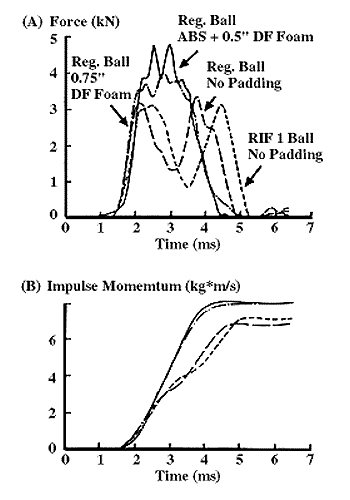
Fig. 1. Load cell measurements supporting crushable styrofoam
show the effect of various combinations of baseballs and protective
equipment. For a detailed description of the baseballs and chest protectors
used, see Table 1. A: Impact force measurements.
B: Impulse momentum computed as the integral of reaction force over
the time of impact.
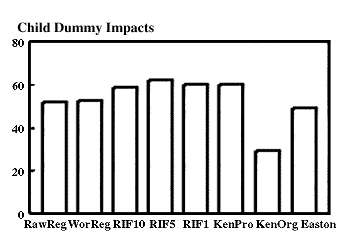
Fig. 2. Peak spinal acceleration (g) data from the 6-year-old
child dummy impacted in the chest by various commercially available
baseballs. For a detailed description of the baseballs and
chest protectors used, see Table 1.
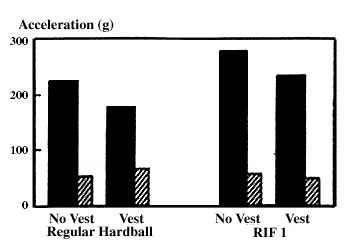
Fig. 3. Peak sternal (dark bars) and spinal (light bars)
acceleration results from imapcts using a standard and a soft
core baseball with the International Protective Athletic Safety
Corporation (IPASC) vest interposed.
Hybrid III crash dummy tests
Detailed data on sternal acceleration,
spinal acceleration, chest deflection, and the viscous response criterion are
presented in Table 4. Measurements of the viscous
response criterion using the fifth percentile Hybrid III female dummy with
standard baseballs and softer core baseballs showed little protective effect
alone or in combination with a variety of chest protectors (Table 4 and Fig. 4). In fact, one of
the softer core baseballs (RIF 1) resulted in the highest viscous response
observed (Fig. 4A). Protective foams as well as ABS hard
shell covered forms had only a marginal effect in reducing levels of viscous
response to baseball impact (Table 4).
Table 4. Results of baseball
impact tests on fifth percentile Hybrid III female dummy
Chest
Sternal Spinal Chest defl. VC
Test accel. accel. defl. VC adj. adj.
no. (g) (g) (mm) (m/s) (mm) (m/s)
0.50 in. AH Foam
Worth Regular 11 603 71 8.5 0.073 48.5 1.46
Worth Regular 12 707 83 8.3 0.069 48.3 1.38
RIF 1O 13 711 72 8.8 0.085 48.8 1.70
RIF 10 14 744 71 8.7 0.082 48.7 1.64
RIF 5 15 654 71 8.8 0.085 48.8 1.70
RIF 5 16 730 72 8.9 0.088 48.9 1.76
RIF 1 17 423 56 9.3 0.090 49.3 1.80
RIF 1 18 491 48 9.3 0.097 49.3 1.94
Rawlings
0.25AH + 0.05ABS 19 455 55 8.7 0.076 48.7 1.52
0.25AH + 0.05ABS 20 656 70 8.2 0.069 48.2 1.38
0.50DF + 0.05ABS 21 484 36 7.6 0.061 47.6 1.22
0.50DF + 0.05ABS 22 464 43 7.9 0.063 47.9 1.26
0.25DF + 0.05ABS 23 530 46 7.8 0.060 47.8 1.20
0.25DF + 0.05ABS 24 629 39 8.2 0.067 48.2 1.34
0.50AH + 0.05ABS 25 507 29 7.6 0.063 47.6 1.26
0.50AH + 0.05ABS 26 563 30 7.9 0.063 47.9 1.26
No protection
Rawlings 760 100 9.6 0.093 49.6 1.86
Rawlings 780 90 8.8 0.071 48.8 1.42
Worth Regular 2 762 82 9.3 0.096 49.3 1.92
Worth Regular 3 820 67 8.8 0.076 48.8 1.52
RIF 10 4 896 63 8.7 0.075 48.7 1.50
RIF 10 5 844 69 8.5 0.072 48.5 1.44
RIF 5 6 857 62 9.1 0.088 49.1 1.76
RIF 5 7 867 66 9.4 0.103 49.4 2.06
RIF 1 8 624 60 9.5 0.097 49.5 1.94
RIF 1 9 492 57 9.4 0.097 49.4 1.94
Sternal and spinal acceleration (accel.) and absolute and adjusted (adj.)
values for chest deflection (defl.) and viscous response criterion
(VC) in the Hybrid III female
dummy. The adjusted deflection and viscous responses are computed by
adding 40 mm for the skin deformation to the intemal deflection and
multiplying the internal viscous response by 20 to approximate the
external value of viscous loading by the baseball. For a detailed
description of the baseballs and chest protectors used, see
Table 1.
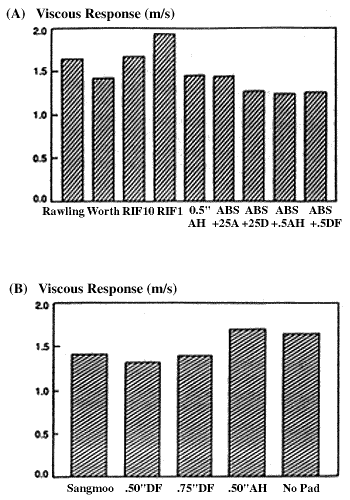
Fig. 4. Viscous response criterion values computed from chest
deflection data obtained using the fifth percentile Hybrid III dummy
to test different baseballs (A) and chest protectors using the
standard baseball (B). For a detailed description of the baseballs and
chest protectors used, see Table 1.
Electrocardiography
In the animal model, when various foam vests
consisting of ABS plastic and 0.5 in. foam were tested using the hard ball, the
electrocardiographic changes were suggestive of ischemic changes and progressed
to an arrhythmia pattern such as ventricular fibrillation with less protection.
It should be noted that in testing the same type of plastics and foams with the
softer core baseballs, ventricular fibrillation or asystole did not occur but
arrhythmias were observed (Table 2).
Pathology
The gross pathological changes in one test were
consistent with a cardiac contusion extending from the epicardium through the
myocardium into the endocardium. Minor contusions were found when using either
the softer core baseballs or the hard ball. The photomicrographs were consistent
with epicardial hemorrhage along with interstitial hemorrhage in the myocardium
and, in some eases, hemorrhage in the subendocardium (Fig.
5). However, myocardial contusion was neither a frequent or necessary injury
related to death in these or the previous animal tests [13].
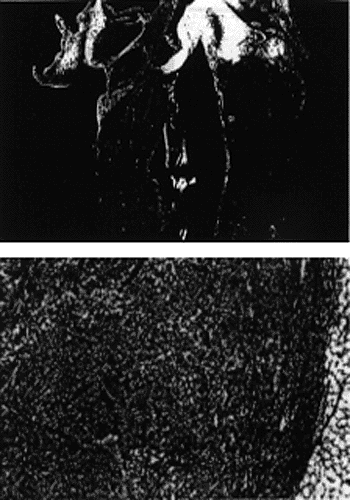
Fig. 5. A: Gross pathologic findings in the pig heart consistent
with a full-thickness cardiac wall contusion. B: Micropathology
of the same pig heart following a baseball impact. The findings
are consistent with epicardial hemorrhage, interstitial, and
subendocardial hemorrhage.
DISCUSSION
The events leading to this study relate to the sudden, unexplained deaths of
children from blunt chest trauma in baseball. Case files of the deaths have
indicated that most of the fatal injuries display no gross physiologic findings
at autopsy C.7,12). Similarly, in the animal model of baseball impact to the
chest previously reported, few significant anatomical or pathological changes
were found [13].
It was the purpose of this study to examine the effects of soft core
baseballs and commercial chest protectors in reducing the forces from baseball
impacts. In order to do this, three experimental models were used: (i) an animal
model using the swine sus scrofa, (ii) a child crash dummy, and (iii) a fifth
percentile Hybrid III female crash dummy. Al though several independent
measurements may be used to define the severity of impact, the single best
measurement is the VC. The exposures in this study resulted in an average
approaching VCmax = 2.0 m/s, which is within the range for producing life
threatening injury by high-speed impact [5].
In the animal study (Table 2), utilizing a standard
baseball and one softer core baseball with a variety of generic chest
protectors, serious arrhythmias and death occurred with the softer core (RIF 1)
base balls but the arrhythmias were generally of lower severity.
Impact studies of softer core baseballs compared with two models of regular
baseballs indicated little protective benefit with the softer core versions. For
example, it was found that the RIF I baseball impact did not sufficiently reduce
the momentum transfer compared with the standard baseball (Fig. 1). In addition, the softer core baseball RIF 1 was
found to produce a slightly increased average momentum in the unprotected chest
condition in comparison to the standard hard ball (Fig.
1). Although the softer core baseball reduced sternal and to a lesser extent
spinal acceleration in the animal model (Table 2) and
fifth percentile Hybrid III female dummy (Table 4),
acceleration is not as meaningful an indicator of chest injury as the viscous
response or chest deflection [12]. An examination of
chest deflection and viscous response data (Table 4, Fig. 4) indicates that these values are as high or higher
in the softer core baseballs. As illustrated in Fig. 2,
spinal acceleration, an indicator of energy transfer to the viscera, was
greatest with several of the softer core baseballs.
Likewise, little protective effect was found with the use of commercially
available chest protectors. In the crushable foam tests, increased momentum
transfer was found when these protectors were used (Table
3). When utilizing the standard hard ball and closed cell foam padding, the
force in creased between 6 and 43% and the momentum in creased between 10 and
15%. When a softer core baseball was utilized with chest padding, the force
measured increased between IS and 58% and the momentum increased between 14 and
18%. These results suggest that the closed cell foam protection may actually act
as a conductor of energy and therefore potentiate impact injury.
CONCLUSION
All the tests and comparisons, either in the animal model, the child dummy,
or the S% Hybrid III female dummy, failed to demonstrate a significant advantage
with respect to impact force reduction using softer core baseballs or a variety
of chest protectors. In some cases, the protective equipment exacerbated the
baseball impact effects. Currently, the efforts of manufacturers are focused on
the development of softer baseballs and various types of chest protection to
eliminate chest impact injuries and fatalities. However, to date, no effective
preventive approach has been developed to eliminate or significantly reduce
chest impact fatalities in the pediatric population exposed to the rare direct,
high-speed baseball impacts. Further research and development of products must
be instituted with emphasis placed on independent testing utilizing reproducible
biomechanical models as described in the present study.
Acknowledgments
The authors wish to express their appreciation to Mr. Howard Bender for his
assistance with the animal model. Thanks must also go to Mr. Todd Townsend for
his skill and creativity in the modification of the child dummy, and especially
Mr. Joseph McCleary for his diligence in assisting with the impact tests. In
addition, the authors express their appreciation to Dr. T. Wentz for her help
with the pathological specimens in this study and Dr. Kurt Holland for his skill
with and interpretation of the electrocardiograms. The authors would like to
thank Mr. John Marcello and Danmar Products for their help and guidance in
procuring and developing the generic materials utilized in this study.
REFERENCES
- Consumer Product Safety Commission Product summary
reports, National Electronic Injury Surveillance System, June 1983 through
1989.
- Rutherford G, Kennedy J, McGhee L. Hazard Analysis;
Base and softball related injuries. U.S. Consumers Product Safety Commission,
1984.
- Janda DH, Hankin FM. Wojtys EM. Softball injuries:
cost, cause, prevention. Am Fam Physician 1986;33:143-4.
- Janda DH, Wojtys EM, Hankin FM, et a1. Softball
sliding injuries. A prospective study comparing standard and modified bases.
JAMA 1988;259:1948-50.
- Viano DC, Lau IV. Viscous tolerance criterion for
soft tissue injury assessment. J Biomech 1988;21:387-99.
- Janda DH, Wojtys EM, Hankin FM, Benedict ME,
Hensinger RN. A three-phase analysis of the prevention of recreational softball
injuries. Am J Sports Med 1990;18:632-5.
- King AI, Viano DC. Baseball related chest impact.
Final report to the Consumer Product Safety Commission, report #CPSC-C-84-1170,
July 15, 1986.
- Pashby TJ, Bishop PJ, Easterbrook WM. Eye injuries
in Canadian racquet sports. Am Fam Physician 1982;28:967-71.
- Peterson TR. The cross-body block, the major cause
of knee injuries. JAMA 1970;211:211-4.
- Rutherford G. National Youth Sports Coaches
Association, National Summit Presentation, September 1991.
- Stein PD, Sabbah HN, Viano DC, Vostal JJ. Response
of the heart to nonpenetrating cardiac trauma. J Trauma 1982;22:364-73.
- Viano DC, Andrzejak DV, King AI. Fatal chest injury
by baseball impact in children: a brief review. Clin J Sports Med 1992;2:161-5.
- Viano DC, Andrzejak DV, Polley TZ, King AI.
Mechanism of fatal chest injury by baseball impact: development of an
experimental model. Clin J Sports Med 1992;2:166-71.
- Viano DC, Andrezejak DV, Polley TZ, King AI.
Biomechanics of fatal baseball impact of the chest in children. ASME J Biomech
Eng (in press).
This article was published as:
"An Analysis of Preventative Methods of Baseball
Induced Chest Impact Injuries"
Clinical Journal of Sports Medicine
Vol. 2, 1992, pp. 172-9
Janda DH, Viano DC, Andrzejak DV, Hensinger RN
It is possible to order a copy of this article.
|